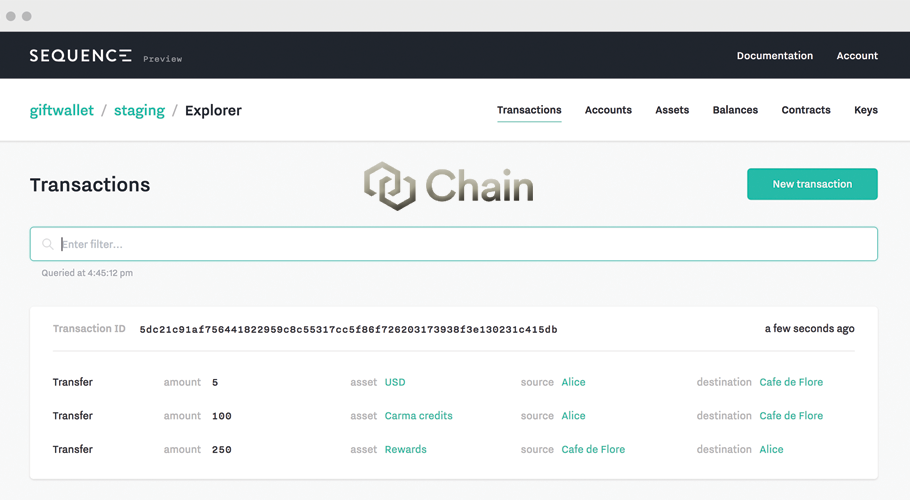Chain, a San Francisco firm which designs, deploys, and operates scalable blockchain networks that meet the security, privacy, and compliance requirements of the financial services industry, announced today a new cloud-based ledger service called ‘Sequence.’
The application is being developed to manage balances in financial and commerce applications like wallet apps, lending platforms, marketplaces, exchanges, and more. Sequence lets modern software teams focus on shipping and scaling their product instead of building and maintaining ledger infrastructure. It does this by combining the convenience of SaaS with the security of cryptographic transaction signing.
Why did Chain build Sequence?
The quick answer from Sequence, again: To let teams focus on shipping their product instead of building and maintaining ledger infrastructure. In short, to enable teams to move fast and break nothing. Sequence makes it easy to build, operate, and scale forward-thinking software products that need a secure and extensible system of record at their core.
The Chain team stated:
“Simply, because balances are everywhere. They’re in mobile wallets, P2P lenders, cryptocurrency exchanges, fundraising platforms, sharing economy apps, robo-advisors, prepaid phones, capitalization tables, video games, betting sites, and thousands of other places. This is relatively new. It used to be that balances only lived at banks, and while banks aren’t going anywhere, they are being “unbundled.”
“Startups are building businesses around every product traditionally offered by large financial institutions, from lending to mortgages, payments to investing. What’s more, the internet is enabling new types of products that could not exist before. Even whole new asset classes are emerging (i.e., cryptocurrencies).”
What can developers build on Sequence? Examples of how teams are already using it:
- A ride-sharing app is storing driver balances and rider credits
- A mobile payments start-up is recording funds due to merchants
- A cryptocurrency exchange is managing custody of client assets
- A lender is issuing and tracking loans
- A VoIP platform is storing balances of prepaid minutes
How does Sequence work?
Sequence is a cryptographically-secured cloud service. While ledgers are managed as a service, all transactions must be signed by the relevant keys. These keys are held in secure enclaves and controlled by the users, services, or organizations that have authority over particular assets, accounts, and functionality. Sequence cannot access them. This “cloud + keys” model is how Sequence combines tamperproof security with a great developer and operator experience.
Under the hood, each Sequence ledger is an immutable, append-only data structure. Balances are represented by token-like objects called assets. Assets can be created, transferred, retired, or entered into more complex programs. To ensure atomicity, a single transaction can include multiple actions involving any number of assets and accounts.
A public Developer Preview is open now and is free to use. To start, simply register a team, create a ledger, and embed the Sequence SDK in an application. Development enclaves are provided so developers can begin building immediately. There is also an easy-to-use dashboard where developers can prototype and query transactions without writing any code.
When will Sequence be in General Availability and what will it cost?
A production enclave service with Intel SGX will be available in Q1 2018, which is also when we plan to enter General Availability. Production pricing will be available then, Chain said they are happy to share pricing prior to that with those in the Developer Preview.
